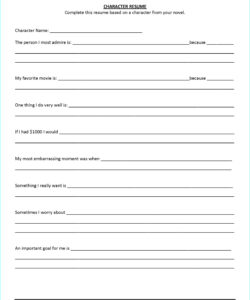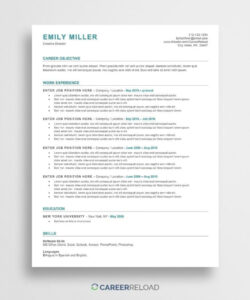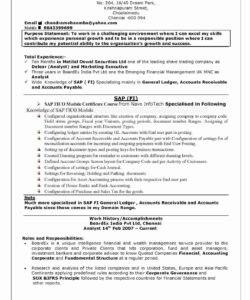When it comes to applying for scholarships, a well-crafted resume can be the key to success. A scholarship resume is a document that highlights your academic achievements, extracurricular activities, and other relevant experiences. It is important to create a resume that is tailored to the specific scholarship you are applying for, as different scholarships may have different requirements.
In this article, we will provide you with tips and guidelines on how to make a resume for scholarships that will help you stand out from the crowd.
Section 1: Crafting Your Scholarship Resume
The first step in creating a scholarship resume is to gather all of the relevant information. This includes your academic achievements, extracurricular activities, volunteer work, and any other experiences that may be relevant to the scholarship you are applying for. Once you have gathered all of this information, you can begin to craft your resume.
When crafting your scholarship resume, it is important to keep in mind the specific requirements of the scholarship you are applying for. Some scholarships may require a certain GPA or specific extracurricular activities, so be sure to read the requirements carefully.
Here are some tips for crafting a successful scholarship resume:
Tip 1: Keep it concise
Your scholarship resume should be no longer than one page. Be sure to include only the most relevant information and experiences.
Tip 2: Use bullet points
Using bullet points can help make your resume more readable and organized. Be sure to use action verbs to describe your experiences.
Tip 3: Highlight your achievements
Be sure to highlight your academic achievements, such as your GPA and any awards or honors you have received. Also, highlight any relevant extracurricular activities or volunteer work.
Tip 4: Tailor your resume to the scholarship
Be sure to tailor your resume to the specific scholarship you are applying for. Highlight experiences and achievements that are relevant to the scholarship requirements.
Section 2: Common Mistakes to Avoid
When creating a scholarship resume, there are some common mistakes that you should avoid:
Mistake 1: Including irrelevant information
Be sure to include only the most relevant information and experiences. Including irrelevant information can make your resume appear cluttered and unprofessional.
Mistake 2: Failing to proofread
Be sure to proofread your resume carefully for spelling and grammar errors. A resume with errors can make a poor impression on scholarship committees.
Mistake 3: Using a generic resume
Be sure to tailor your resume to the specific scholarship you are applying for. Using a generic resume can make it appear that you are not serious about the scholarship.
FAQ
Q: What should I include in my scholarship resume?
A: You should include your academic achievements, extracurricular activities, volunteer work, and any other experiences that may be relevant to the scholarship you are applying for.
Q: How long should my scholarship resume be?
A: Your scholarship resume should be no longer than one page.
Q: How can I make my scholarship resume stand out?
A: To make your scholarship resume stand out, be sure to highlight your achievements and tailor your resume to the specific scholarship you are applying for.
Q: What are some common mistakes to avoid when creating a scholarship resume?
A: Some common mistakes to avoid include including irrelevant information, failing to proofread, and using a generic resume.
We hope that this article has provided you with helpful tips and guidelines on how to make a resume for scholarships. Remember to tailor your resume to the specific scholarship you are applying for, highlight your achievements, and proofread carefully. Good luck!


